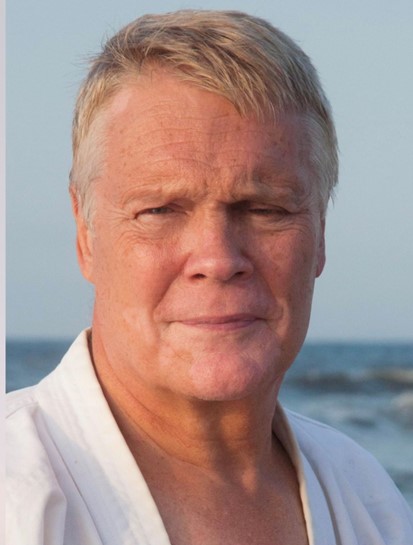The Weakness Of Strength
How An Aggressive Attacker Can Set Himself Up For Defeat
By Christopher Caile
He is angry, upset. He steps up to you barking insults, presses his chest up into you and then takes a swing. He is looking for a fight and you are it. His actions show he has lost control of his emotions.
This type of aggressor is ready to fly off the handle at the least perceived challenge or insult. In response they try to control you by physical intimidation, aggressive behavior, anger, and sometimes attack. Often too they cruise looking for the weak and easily intimidated. You often see this behavior around alcohol in bars and sporting events.
This type of aggression, the kind that leads to an assault, contains its own weakness, its own seeds of defeat – the loss of control.
The roots of this personality type (assuming they do not have a mental disorder) reflect internal conflict — frustration, low self esteem, a fragile ego and/or the inability to control a relationship with others, such as with a spouse, or people at work or within their social environment. This type of personality problem can also stem from internal anger, or guilt generated from inability to control and shame over an addiction – drugs, alcohol, gambling, etc.
Aggression is unleashed when this internal turmoil boils outward. He finds compensation and emotional reward when he can control others — in voice, in argument, in directed anger, in physical control or assault. But the emotional reward from these ventures is momentary. Internally they remain emotionally famished. External control can’t really compensate. It only gives temporary relief.
The best way to avoid an assault from this personality type is to interact non-emotionally, being careful not to feed their emotions by injecting your own. By listening, by quiet redirection and patience, this type of emotional confrontation can be reduced, if not avoided. But not always.
If the attack can’t be avoid, these people often exhibit a fatal flaw in their attack. Their lack of emotional control creates a parallel lack of physical control – the attack is often uncontrolled in an attempt to make contact, knock out with a single punch, to strike out and hurt – an attack which opens up the attacker to a counter. Wild emotions can release wild actions. In short, the single minded strength of their attack is also their weakness.
Thas is why traditional martial arts emphasize mental discipline and mental control as well as physical control within technique. Thus kata techniques are very disciplined and exact with form. Basic practice can also be repetitious and difficult. Progress is slow and the process takes sustained effort. Usually those seriously unbalanced find the effort frustrating and discontinue training, but if they stick it out, it can help them control and overcome their emotional issues.
By disciplining and controlling the mind and body you also discipline your technique and actions. You don’t needlessly expose yourself to counters, open yourself up or put yourself in a dangerous position. Your actions even when countering are controlled and not wild and do not overextend or overreach.
Thus, an important component of kata, free fighting and even self-defense is your own mental and physical self-control. It is not enough to be powerful, or strong – your strengths and actions must be measured by discipline.
If emotionally controlled, you are unlikely to be prompted into an attack. You can also maintain an even voice and clear mind that does not feed into and escalate emotions voiced by others. This dampens potential conflict and aggression. You maintain control of situations by exercising control over yourself. This way internal control becomes real power – a method of its own self-defense.
Those who are humble are often the strongest, the most internally sure of themselves and confident. There is no need for them to prove themselves externally. Their calm demeanor and clear mind will serve them well.

About the Author Christopher Caile

Christopher Caile
Christopher Caile is the Founder and Editor-In-Chief of FightingArts.com. He has been a student of the martial arts for over 65 years.
He first started in judo while in college. Then he added karate as a student of Phil Koeppel in 1959 studying Kempo and Wado-Ryu karate. He later added Shotokan Karate where he was promoted to brown belt and taught beginner classes. In 1960 while living in Finland, Caile introduced karate to that country and placed fourth in that nation’s first national judo tournament.
Wanting to further his karate studies, Caile then hitch hiked from Finland to Japan traveling through Scandinavia, Europe, North Africa, the Middle East and South and Southeast Asia — living on 25 cents a day and often sleeping outside.
Arriving in Japan (1962), Caile was introduced to Mas Oyama and his fledgling full contact Kyokushinkai Karate by Donn Draeger, the famous martial artist and historian. Donn also housed him with several other senior international judo practitioners. Donn became Caile’s martial arts mentor, coaching him in judo and introducing him to Shinto Muso-ryu under Takaji Shimizu.
Caile studied at Oyama’s honbu dojo and also at Kenji Kurosaki’s second Tokyo Kyokushinkai dojo. In his first day in class Oyama asked Caile to teach English to his chief instructor, Tadashi Nakamura. They have been friends ever since. Caile also participated in Oyama’s masterwork book, “This Is Karate.”
Caile left Japan with his black belt and designation as Branch Chief, the first in the US to have had extensive training in Japan directly under Oyama Sensei. As such, Oyama Sensei asked him to be his representative on visits to his US dojos to report on their status.
A little over a year later, Nakamura, Kusosaki and Akio Fujihira won an epic David vs. Goliath challenge match against Thailand’s professional Muay Thai Boxers in Bangkok, Thailand, thrusting Kyolushinkai and Nakamura into national prominence.
Back in the US Caile taught Kyokushinkai karate in Peoria, Il while in college and later in Washington, DC. while in graduate school. Durimg this time Shihan Nakamura had moved to New York City to head Kyokushinkai’s North American Operation.
In 1976 when Kaicho Tadashi Nakamura formed the World Seido Karate organization, Caile followed. Living then in Buffalo, NY, Caile taught Seido karate and self-defense at the State University of New York at Buffalo (SUNY Buffalo) for over 15 years where he also frequently lectured on martial arts and Zen in courses on Japanese culture.
Caile moved to New York City in 1999 to marry Jackie Veit. He is now an 8th degree black belt, Hanshi, training in Seido Karate’s Westchester, NY Johshin Honzan (Spiritual Center) dojo. In Seido Caile is known for his teaching of and seminars on kata applications. He also produced a 14 segment video series on Pinan kata Bunkai currently available to Seido members.
Caile is also a long-time student and Shihan in Aikido. He studied in Buffalo, under Mike Hawley Shihan, and then under Wadokai Aikido’s founder, the late Roy Suenaka (uchi deshi under Morihei Ueshiba, founder of Aikido and was Shihan under Tohei Sensei). In karate, Suenaka (8thdan) was also an in-house student of the Okinawan karate master Hohan Soken.
Having moved to New York City, Caile in 2000 founded this martial arts educational website, FightingArts.com. Twenty-five years later, in 2025, it underwent a major update and revision.
For FightingArts.com and other publications Caile wrote hundreds of articles on karate, martial arts, Japanese art, Chinese Medicine and edited a book on Zen. He also developed relationships with a cross section of leading martial arts teachers. Over the last four decades he has conducted extensive private research into karate and martial arts including private translations of the once secret Okinawan hand copied and passed on Kung Fu book, the Bubishi, as well as an early karate book by the karate master Kenwa Mabuni. He periodically returns to Japan and Okinawa to continue his studies and participate Seido karate events. In Tokyo he practiced (with Roy Suenaka Sensei) in a variety of aikido organizations with their founders – including private interviews and practices at the Aiki-kai Aikido Honbu dojo with the son and grandson of aikido’s founder, Doshu (headmaster) Kisshomaru (an old uchi-deshi friend) and his son, Moriteru Ueshiba and in Iwama with Morihiro Saito. On Okinawa he studied Goju Ryu karate under Eiichi Miyazato, 10th dan founder of Naha’s Jundokan, and also with Yoshitaka Taira (who later formed his own organization, who specialized in kata Bunkai. While there Caile also trained with Hohan Soken’s senior student, Master Fusei Kise, 10 dan as well as with the grandson of the legendary karate master Anko Itosu.
Caile’s other martial arts experience includes: Diato-ryu Aikijujitsu and Kenjitsu, kobudo, boxing, Muay Thai, MMA, Kali (empty hand, knife and bolo), study of old Okinawan Shoran-ryu & Tomari body mechanics, study of old Okinawan kata under Richard Kim, study of close quarter defense and combat, including knife and gun defenses, Kyusho Jitsu and several Chinese fighting arts including 8 Star Praying Mantis, Pak Mei (White Eyebrow), and a private family system of Kung Fu.
Caile is also a student of Zen as well as a long-term student of one branch of Traditional Chinese Medicine, Chi Kung (Qigong). As one of two senior disciples of Chi Kung master Dr. Shen (M.D., Ph.D.) Caile was certified to teach and practice. This led to Caile’s founding of the The Chi Kung Healing Institute on Grand Island, NY. In Western NY, he also frequently held Chi Kung seminars, including at SUNY Buffalo and at the famous Chautauqua Institution in Chautauqua, NY. His articles on Chi Kung also appeared in the Holistic Health Journal and in several books on alternative medicine.
Caile holds a BA in International Studies from Bradley University and MA in International Relations with a specialty in South and Southeast Asia from American University in Washington, D.C. While in Buffalo, NY he also studied digital and analog electronics.
In his professional life Caile also worked in public relations and as a newspaper reporter and photographer. Earlier he worked in the field of telecommunications including Managing a Buffalo, NY sales and service branch for ITT. He then founded his own private telephone company. This was followed by creation of an electrical engineering company that designed and patented his concept for a new type of low-cost small business telephone system (which was eventually sold to Bell South). The company also did contract work for Kodak and the US space program. Simultaneously Caile designed and manufactured a unique break-apart portable pontoon boat.
Most recently Caile co-founded an internet software company. Its products include software suites with AI capability for control and management of streaming media, such as video and music, an all-in-one book publishing software product for hardcover, eBook and audio book creation and security software for buildings and government use.
For more details about Christopher Caile’s martial arts, work experience and life profile, see the About section in the footer of this site.
Search for more articles by this author:






